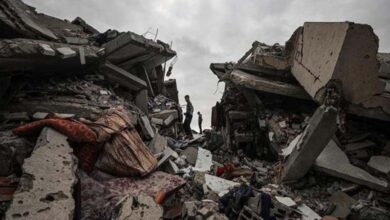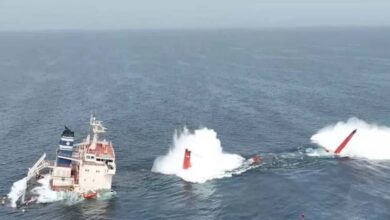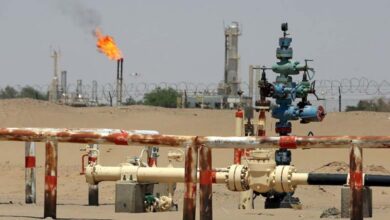An Oil Lifeline in Houthi Hands… Ras Issa in the Eye of the Storm

It wasn’t just a platform for unloading fuel shipments, but since 2016, it has served as the cornerstone of the Houthi war economy. Iranian oil shipments flowed through it, generating revenues that exceeded hundreds of millions of dollars, which were then turned into fuel for conflict and funding for smuggling and arms acquisition.
-
The Demons’ Deal: Houthis Release Al-Qaeda Terrorists to Reinforce Their Frontlines
-
American Airstrikes on Houthis Expose the Double Standard of Yemen’s Muslim Brotherhood
This is the Ras Issa port — the most strategic oil terminal on Yemen’s western coast — which was targeted Thursday by a precision strike from U.S. Central Command. The operation represents a serious blow to the economic infrastructure of the militias, who have long used imported oil as an internal tool of blackmail and control.
On Thursday evening, the United States carried out more than five airstrikes on the Ras Issa port, completely destroying the buoy system and storage facilities built in 2014 and put into service a year later, coinciding with the Houthi militia’s launch of its destructive coup war.
-
The Muslim Brotherhood and the Houthis… Playing Openly After “Under-the-Table” Alliances
-
Houthis Call on the Muslim Brotherhood Regarding Syria
What do we know about Ras Issa port?
- Construction began in September 1986 as a floating station to export oil via the Safer vessel.
- It is connected to a pipeline about 438 kilometers long carrying oil from Ma’rib, previously exporting nearly 200,000 barrels per day until it ceased operations in 2011.
- Located in the Salif port basin, the oil terminal has several key features:
- It relies on buoys, pipelines, and storage facilities.
- It has naturally deep waters up to 50 meters, and about 16 meters near the shore, enabling the docking of massive oil tankers.
- It is naturally protected from waves by Kamaran Island to the west, making it a safe anchoring area.
- It can accommodate over 50 ships and tankers at anchor.
- The port has two maritime entryways: a northern one for large vessels, and another narrow, shallow channel suitable only for small-draft marine floats.
-
Houthis Launch Ideological and Military Recruitment Campaign for Students Amid Public Outrage
-
Houthis Threaten Israel amid Stalled Second Round of Truce Negotiations
How did the Houthis exploit it?
Since 2016, the Houthi militia monopolized Ras Issa port, with daily inflows of Iranian oil, in addition to fuel support from other Iran-aligned countries.
According to a maritime source, Ras Issa port was exclusively used “for commercial shipments operated by Houthi militia leaders in the oil market, who import Iranian oil and circumvent U.S. sanctions.”
The port received dozens of shipments of free oil and gas from Iran to the Houthis, which generated millions of dollars for the militia each month.
-
Houthis Torture a Young Man to Death for Refusing to Join Their Training… Details
-
The Houthis Attempt to Seize Residents’ Lands in Taiz and Turn Them into Mobilization Camps
According to local reports, the Houthis collected about $790 million in a single year from customs duties and taxes on gasoline, diesel, and gas arriving via Ras Issa — not including the free Iranian fuel.
They also imposed heavy taxes on oil and gas, raising prices by 40% in areas under Houthi control. The collected funds were allocated to weapons purchases and equipment smuggling.
On April 5, the U.S. imposed a fuel supply ban through Ras Issa and Hodeidah ports. However, “ships kept flowing in,” prompting the U.S. to strike the supply platform and render it inoperable.
A statement from U.S. Central Command explained that the Houthis “used fuel to support their military operations, as a tool of control, and to economically profit from embezzling import revenues.” The aim of the strike on Ras Issa port was thus “to weaken the Houthis’ economic power source.”












